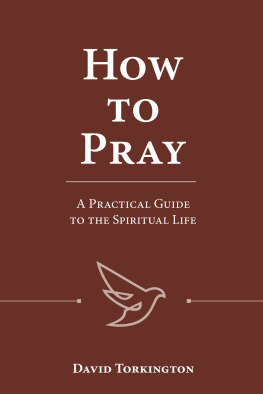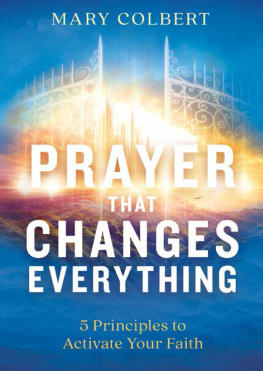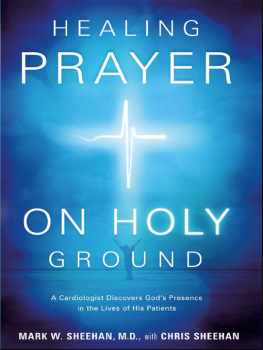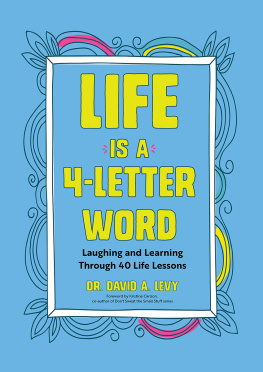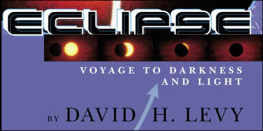As a practicing neurointerventional surgeon in San Diego and colleague of Dr. Levy, I was utterly captivated by the compelling and personal nature of these clinical vignettes. It takes both courage and personal fortitude to openly discuss ones spiritual beliefs in this high-stakes and often cynical field. I can personally attest to the compassion, humility, and prowess I have witnessed in Davids practice. While he and I come from different religious backgrounds, I found the humanistic qualities of his work to be broadly applicable and inspirational to caregivers from all walks of life.
Jordan Ziegler, MD
San Diego
Dr. Levy is a well-trained, experienced, and professionally superb brain surgeon. In bringing God into the equation, he has broken through a near-taboo, and he has done so for the good of patient and family. To do such good is the essence of our calling; for another physician, an agnostic, to recognize his accomplishment must be the highest compliment. You will enjoy this book and the gift of insight it gives you.
Charles Kerber, MD
Professor of Radiology and Neurosurgery
UCSD Medical Center
San Diego
Neurosurgery can be extraordinarily stressful, both for patients and physicians, but in the book Gray Matter neurosurgeon David Levy shows us how spirituality can help defuse some of the tension, while providing readers with a very interesting educational perspective on the brain and its potential. I am delighted to have one of my colleagues stand up boldly for faith and intellect.
Benjamin S. Carson Sr., MD
The Benjamin S. Carson Sr., MD, and Dr. Evelyn Spiro, RN, Professor of Pediatric Neurosurgery
Director of Pediatric Neurosurgery
Professor of Neurological Surgery, Oncology, Plastic Surgery, and Pediatrics
Johns Hopkins Medical Institutions
Author of Gifted Hands
Visit Tyndales exciting Web site at www.tyndale.com.
TYNDALE and Tyndales quill logo are registered trademarks of Tyndale House Publishers, Inc.
Gray Matter: A Neurosurgeon Discovers the Power of Prayer... One Patient at a Time
Copyright 2011 by David Levy and Joel Kilpatrick. All rights reserved.
Cover and interior photographs copyright by Tyndale House Publishers, Inc.
All rights reserved.
Designed by Mark Anthony Lane II
Published in association with the literary agency of WordServe Literary Group, Ltd., 10152 S. Knoll Circle, Highlands Ranch, CO 80130.
Scripture quotations are taken from the Holy Bible, New Living Translation, copyright 1996, 2004, 2007 by Tyndale House Foundation. Used by permission of Tyndale House Publishers, Inc., Carol Stream, Illinois 60188. All rights reserved.
Library of Congress Cataloging-in-Publication Data
Levy, David (David I.)
Gray matter : a neurosurgeon discovers the power of prayer... one patient at a time / David Levy with Joel Kilpatrick.
p. cm.
Includes bibliographical references.
ISBN 978-1-4143-3975-7 (sc)
1.MedicineReligious aspectsChristianity. 2.Nervous systemSurgery
3. PrayerChristianity. I.Kilpatrick, Joel. II.Title.
BT732.L48 2010
261.561dc22 2010050691
This book is dedicated to my father, Isaac Levy, who passed away in 2001. Dad, you were a man of integrity and hard work, on whose shoulders I now stand. You demonstrated courage in the face of adversity, and only now do I realize all that you gave me. After we reconciled in 1997, I asked you to give me a fathers blessing. You wrote, That you may be happy in your work and in your endeavors... and that you continue growing. This book is the fulfillment of that blessing. I know that we will meet again, and when we do, we will have much to celebrate.
Table of Contents
Acknowledgments
I would like to thank talented writer Joel Kilpatrick, who took my dream and made it a reality; Tyndale House acquisition editor Carol Traver, whose advice and expertise guided the project smoothly from start to finish, and editor Cara Peterson, whose insight and editorial skills proved invaluable; and Greg Johnson, my agent, who played an important part in this process.
I wish to extend my heartfelt thanks to those others who made valuable suggestions or contributions to the manuscript, in alphabetical order: Donald Adema, D.O.; SooHo Choi, M.D.; David and Anne Cliffe; Roberto Cueva, M.D., F.A.C.S.; Diane DePaul; Debbie Foreman; Jim Foreman, L.M.F.T.; Clem Hoffman, M.D.; Sandra Langley; Katherine Levy; Vera Levy; Doreen Hung Mar, M.D.; Merrill Nanigian; Mary Ann Nguyen-Kwok; William Rambo, M.D.; Scott Ricketts; Nguyen-Thi Robinson, M.D.; Natalie Rodriguez, M.D.; Mark Slomka; Jamie Wilson; Jordan Ziegler, M.D.
The stories in this book happened to real patients. To protect patient confidentiality, names and some identifying details of every person have been changed. Events are represented as closely as possible to actual occurrence.
Chapter 1
Risk Factors
Maria, the well-dressed businesswoman sitting in my office, had a brain aneurysm. One of the blood vessels in her brain had weakened, causing the vessel wall to balloon out in one place like a snake that has swallowed an egg. From the size and irregular shape of the aneurysm I had concluded that if not dealt with relatively quickly it might burst and kill her.
She was employed in high-level management and looked the part: she wore a black suit and heels, and an attach case that appeared to be full of paperwork, presentations, and binders rested on the chair next to her. It looked as if she might be here on a lunch break between important meetings. I half expected her to say something like, Ive got ten minutes until my face-to-face with clients, Doc. Make it snappy. But I could see that this sudden and unexpected diagnosis was causing her concerna brain aneurysm isnt exactly one of those things you put on your calendar and schedule into your life.
It was our first meeting. She had been referred to me a week earlier by the neurologist who had picked up on the aneurysm, an unexpected catch that might very well save Marias life. Many brain problems dont announce themselves. Aneurysms, notoriously, give no warning; they hide in the brain until one day, when the blood pressure proves too great for the strength of the artery wall, they rupture and bleed, causing a tremendous headache, loss of consciousnessand eventual death. Sometimes, in the fortunate cases, the aneurysm will push against a nerve or brain structure and prompt some odd symptoms that might alert someone before a catastrophic rupture. In Marias case, there hadnt even been a suspicion of an aneurysm. The MRI scan had been ordered for a completely different, minor concern. But like a video security system that happens to catch images of a wanted killer lurking in the background, the scan had detected this menace inside her skull.
My job was to fix it before it could do any real damage.
If you have a brain aneurysm less than seven millimeters in size, a quarter inch in diameter, the chance of it bleeding is relatively low, less than 2 percent per year. That means the chance of it not bleeding is greater than 98 percent every year, which is not a large risk. However, if it does bleed, the risk of death is high30 percent of those whose aneurysms burst dont even reach the hospital alive. They die from the trauma of blood flooding the skull and having nowhere to exit. Of those who make it to the hospital, 30 percent end up with a major cognitive deficit of some sort, losing their ability to talk or walk or recall information or even recognize loved ones. They are not able to resume their previous lifestyles. These are the kinds of facts I have to lay out for patients when discussing whether or not to treat them. I have to tell them whether I think that aneurysm or other malformation we see on the scan has a good chance of bursting or harming them and, if so, how to fix it before it does.



